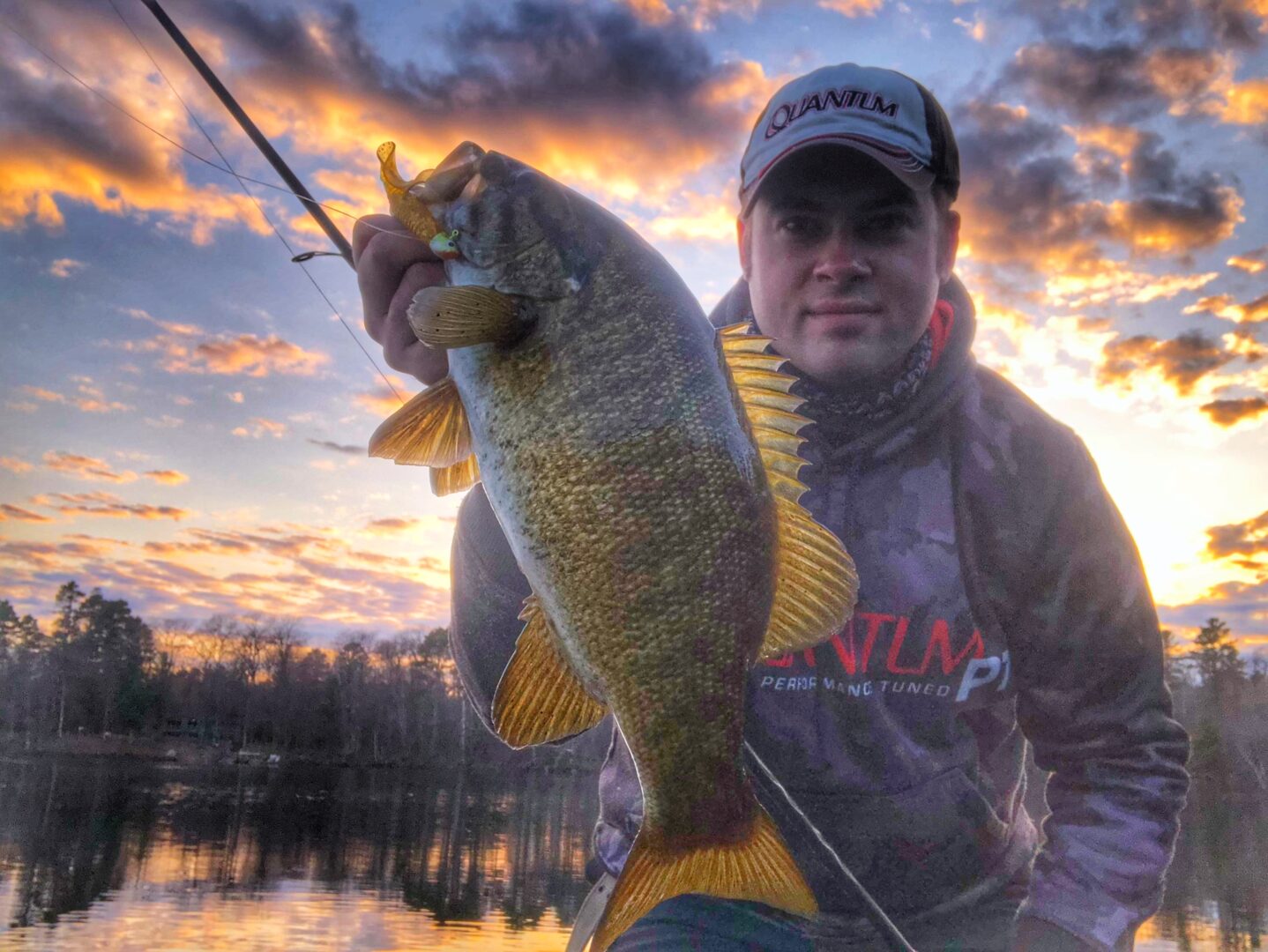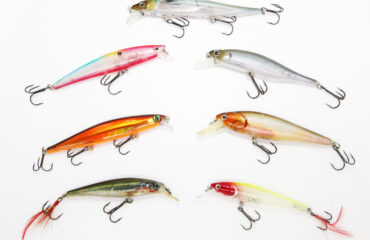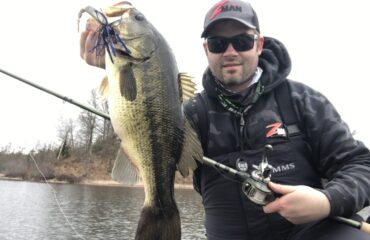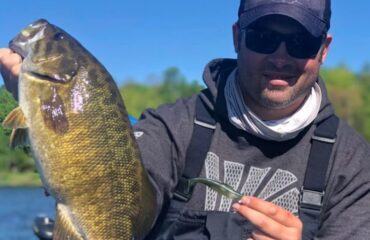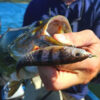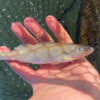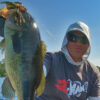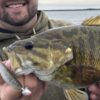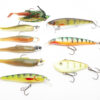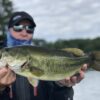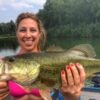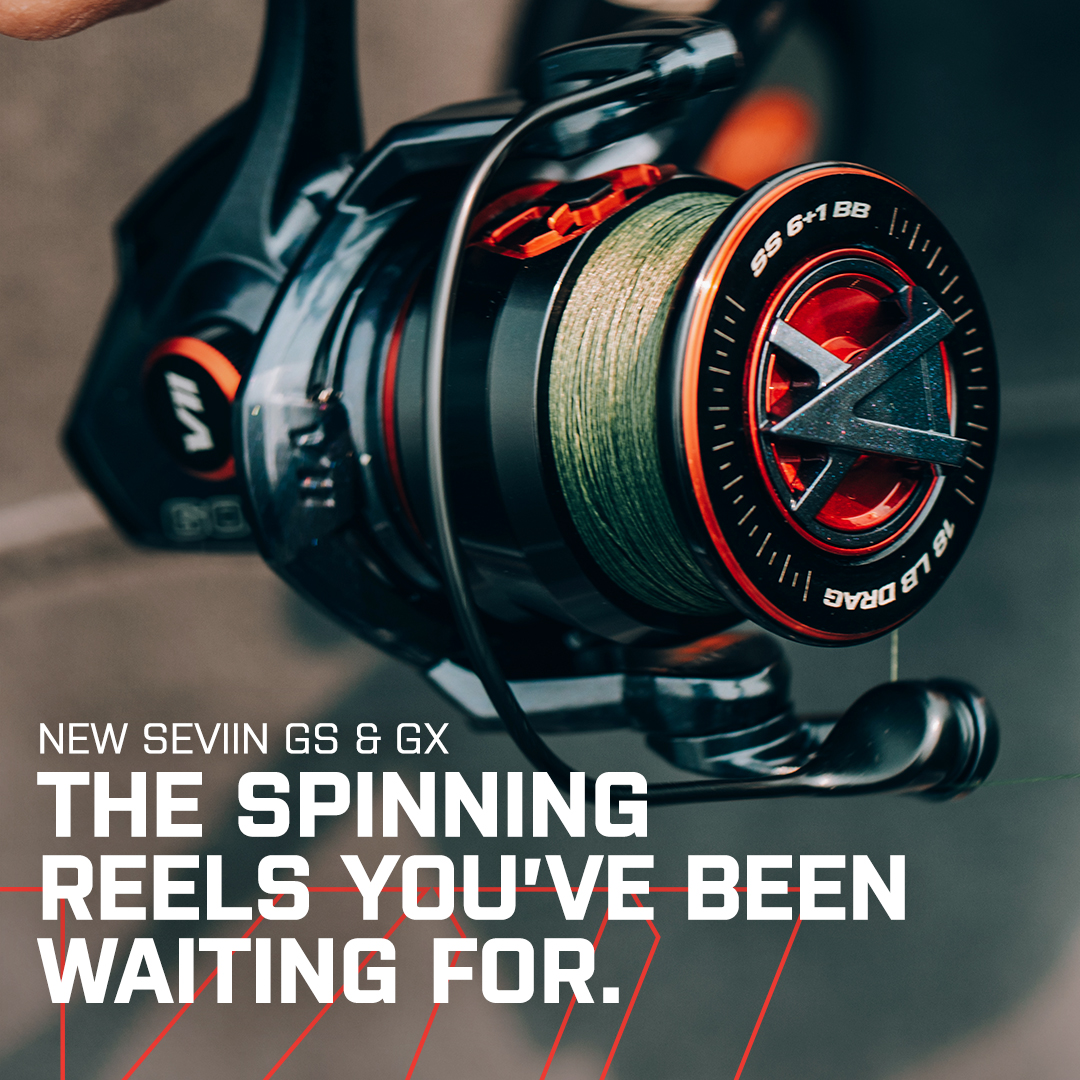Spring Post-Frontal Smallmouths
Since lakes vary so widely with depth, clarity and cover options for bass during the pre-spawn period, it’s difficult to anticipate or define exactly what bass may do under post-frontal conditions. However, if smallmouths are stacked and staging outside of spawning sites, then you’ve got a chance. The odds of catching them will be in your favor.
It’s no secret spring coldfronts are awful. One bad coldfront can single-handedly wreck an entire week of fishing. At that point, feeding windows significantly shorten or close entirely.
So here’s the situation – A bad cold front had just passed through. With it it brings a full week of cold, nasty post frontal conditions with strong north winds and bluebird skies. What should the smallmouth angler do?
In many instances, we’ve seen them plummet water temperatures by 5 degrees or more and the fishing promptly shuts down. Locating staging smallmouths outside of their known spawning areas will save these types of trips.
Spring cold fronts generally make spawning and staging fish retreat away from a shallow spawning area, although they can also return rather quickly, as soon as the weather stabilizes. This indicates that they may not retreat very far. Rather than fleeing and escaping to some form of deep-water sanctuary, they are most likely to move a short distance and hunker down in some form of cover, or on structure, or in slightly deeper water, until conditions moderate and they are able to resume their normal spring behavior.
While a major cold front like this in the spring can make conditions miserable for anglers, a little adaptation to the conditions at hand will save your day of fishing. If done correctly, and as crazy as it sounds, you can possibly have one of your best days ever. In order to do so, think slow and apply patience. Fish as slowly as the fish are reacting to the coldfront. For smallmouth bass impacted by cold front, cover minimal water, by focusing on specific locations and staying on top of them. Fish each location thoroughly and diligently. For coldfront smallies, the keyword is slow. With suspending jerkbaits, that means utilizing baits with hang-time and loud rattles with a few jerks, and retrieving them with excruciatingly long pauses sometimes up to 30 seconds or more.
A few suspending jerkbaits really shine under these adverse conditions.
The Dynamic Lures J-Spec is trustworthy and tremendous. On a good day, it can cover 5 to 8 foot depths. It cuts deeper than most other suspending jerkbaits in its class. Moreover, it has loud rattles. When it cuts and darts side to side, this is a trigger. When paused, it hovers in space.
If you can find any, the old Matzuo Phantom minnow is also favorite (discontinued in 2010).
The Matzuo Phantom Minnow’s erratic darting action and holographic color patterns appeal well to cold front smallmouth bass. Known to draw slashing strikes, enticed by its rattle chamber and suspending profile, the Phantom Minnow is an exceptionally versatile lure that can be used for pulling up fish suspended in deep water or shallow water. During its production, it was available in slow-sinking and suspending models. When smallmouths are stacked and staging, it excels. It’s one of the loudest jerkbaits I’ve used to date.
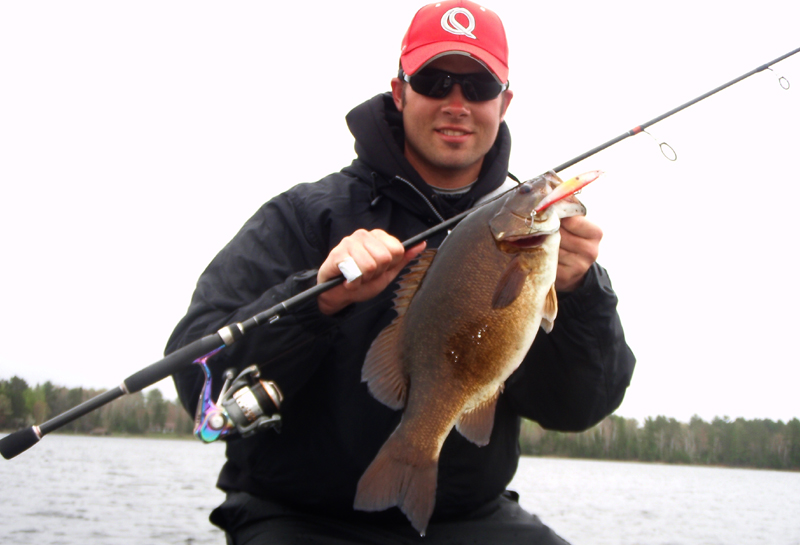
If smallmouths are holding deeper than where a traditional suspending jerkbait can reach, I favor deep divers like the size-11 Shadow Rap Deep. They are irresistible on a long pause in cold water, and will slowly sink deeper. Instead of jerking, give them more subtle pulls to achieve depth. I’ll wait patiently in between pulls if necessary, upwards of 30 seconds. Rip them downward to push it deeper.
I fish my suspending jerks on spinning rods such as St. Croix 7-foot MHF Avid-X (AVS70MHF) and 6-foot 8-inch Victory Tactical (VTS68MXF), and casting rod that includes a 6-foot 8-inch Victory The Jerk (VTC68MXF). The flex and sensitivity of these new Victory rods are in a league of their own. For spinning reels, I recommend a size-30 model with oversize spool to help achieve long casts. I still fish with straight 8 to 10 lb. copolymer lines. On the baitcaster meanwhile, 10 lb. and 12 lb. Seaguar Red Label fluorocarbon is the ideal choice.
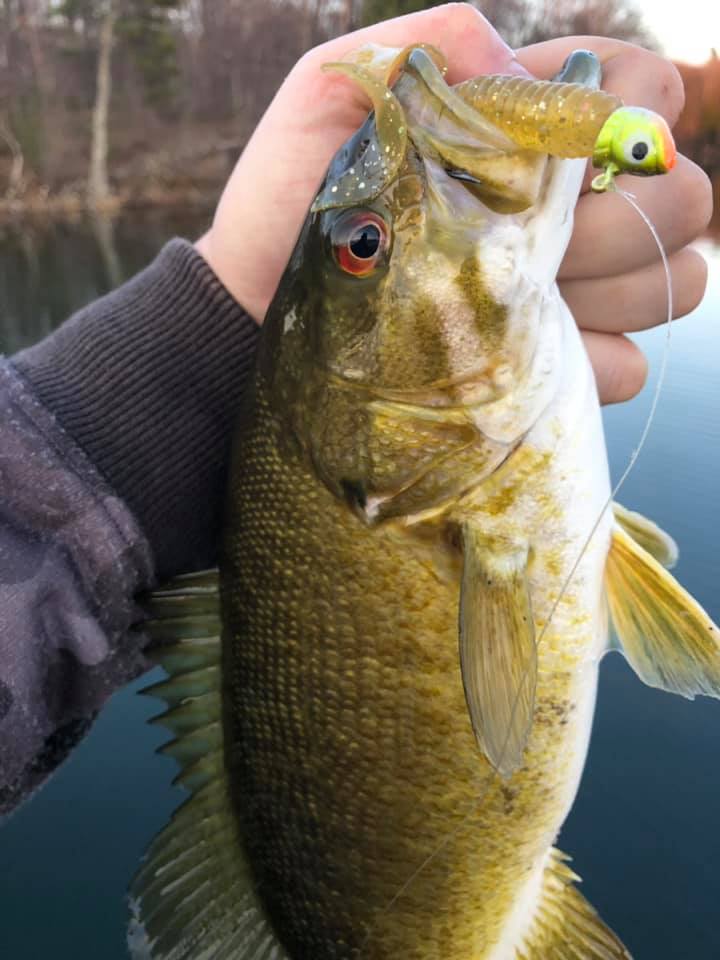 In situations when smallmouths have retreated into deeper water – such as the edges of a primary or secondary break (these can be staging areas also), slow-rolling a swimming plastic can be tedious and painfully slow. But gets the job done.
In situations when smallmouths have retreated into deeper water – such as the edges of a primary or secondary break (these can be staging areas also), slow-rolling a swimming plastic can be tedious and painfully slow. But gets the job done.
A jig and paddletail such as a 3.8” Strike King Rage Swimmer and Keitech Swing Impact Fat is effective. I’ve also become a huge fan of doing the same with Z-Man’s Minnowz and Diezel Minnow, which can be swam subtler and slower with spinning gear, which is strongly recommended.
Slow-rolling a 5” Kalin’s Lunker Grub and swimming it along the bottom will also produce when fish are neutral or negative. Rig with a ¼ oz. Northland Slurp! jig to maintain upright, swimming motion. You can cover lots of water with these as well, while moving down the breakline.
Fish all of the aforementioned presentations slowly and methodically to coax lethargic bites. Work each too fast, and smallmouths affected by the cold front will disengage, lazily drifting back down towards the bottom where they came from.


